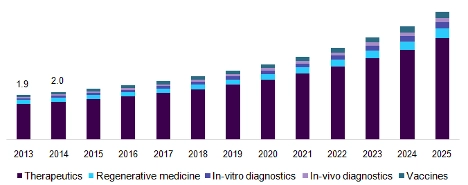The Risks and Benefits of Nanotechnology in Medicine
You have probably heard by now that the Pfizer-BioNTech and Moderna COVID-19 vaccines contain lipid nanoparticles. Nanotechnology is the study of microscopic particles falling between 1 and 100 nanometers in size on the nanoscale. To better understand, the thickness of one nanoparticle is around 1/1000 of the human hair thickness. Objects in this size scale have magnetic properties and can revolutionize the field of health and medicine.
Nanotechnology in medicine is very important from a therapeutic standpoint, and it can also be vital from a diagnostic perspective. By using nanoparticles, a drug can be accurately delivered to the targeted region in the body. This can help treat cancer patients with a customized treatment plan. Not only can nanoparticles significantly improve drug delivery, but scientists are also working on using nanotechnology to analyze DNA in a couple of minutes, and mechanically reverse plaque buildup in arteries. They are also working nanoparticles that deliver insulin to initiate cell growth for diabetic patients, prepare tissues for cryonic storage, build new muscles with carbon nanotubes, repair spinal damage, and much more.

Nanoparticles will also detect diseases in real-time tracking of a patient’s health status, such as any chemical changes inside the body. They can also be programmed into gathering information about specific body parts, and levels of toxins and reporting back to medical professionals.
Who Created the Concept of Nanotechnology?
The concept of nanotechnology was first brought to light in December 1959 by Nobel laureate Richard Fireman. During his lecture at Caltech titled “There’s Plenty of Room at the Bottom,” the Nobel Laureate discussed the future possibility in which scientists could manipulate individual atoms, allowing the development of a miniature technology that can improve human life.
With advanced technology, in 1980, scientists start to work in such a small field. The photo mentioned above presents the US nanomedicine market by product, from 2013 to 2025, in USD billion.
Nanotechnology is used in medicine, food, fuels, batteries, chemical sensors, environmental causes, and much more.
Nanotechnology for Cancer Treatment
Nanotech is already being explored as an early diagnostic tool to detect cancer and infectious diseases long before our current technology can. Most of the time, cancer drugs are washed out of the body through the kidneys before reaching the tumor. With programmable nanoparticles’ help, scientists plan to put the cancer drugs inside them to go through the tumor successfully. Doing so will reduce the dosage needed for chemotherapy, limit side effects such as damaging other healthy tissues, and be less invasive than other treatments.
Enzymes in the blood quickly degrade certain essential but sensitive drugs. To function, they have to be protected by nanoparticles. Today, scientists have created more than ten clinically approved nanoparticles for cancer treatment given to patients worldwide.
The Limitations of Nanotechnology in Cancer Treatment
When using nanoparticles to treat cancerous tumors, the kidney is no longer a problem, but the liver is. The liver filters and destroys foreign objects such as viruses, bacteria, and nanoparticles.
For the nanoparticle to reach the tumor, scientists have to disarm the immune cells in the liver. During their research, scientists found a 70-year-old Malaria drug that can stop the immune cells from internalizing the nanoparticles and allow them to escape the liver and reach the tumor.
Another way to prevent the nanoparticles from getting destroyed by the liver is to use the body’s own nanoparticles. Biological nanoparticles can be found in the urine, blood, and saliva and can be used to deliver cancer. Because these nanoparticles are part of human bodies, the liver is less likely to categorize them as foreign objects.
What Are Some Risks Associated with Nanotechnology?
Some cybersecurity experts believe that nanotechnology can open the door to a new cyber threat. Nanodevices are typically controlled by a program on a traditional electronic device. Some digital security experts assume that a single nanoparticle in the body with its own processor could be hacked. Some also claim that if a patient has more than one nanoparticle inside their body, a hacker can theoretically turn them into a body network using the body’s systems to communicate and do their bidding. Some worry that this technology could be easily weaponized.
By now, no one was able to hack a nanoparticle, and the risk seems to be theoretical. However, to minimize the risk of hacking with nanotechnology, experts believe that there should be strict regulation and undergo penetration testing. Penetration testing is the process a hacker would use to launch an attack on a network, application, network, or website, to identify security issues and vulnerabilities before hackers can locate them.
Even though nanotechnology is an extremely effective method to combat cancer, some experts believe that if a nanoparticle has poor solubility, surface properties, structure, coating, and ability to aggregate, it may lead to chemical and biological reactions that cause cancer.
The Future of Nanotechnology
Today, nanotechnology research is heavily supported by governments and private companies, and with the current levels of funding, the future of nanotechnology is very bright. In the future, scientists will be able to reduce harm to healthy organs, improve the quality of life, and save future patients. Remember that there are also countless other nanotechnology applications outside the field of health and medicine, such as nanoelectronics and energy production, to name a few.



